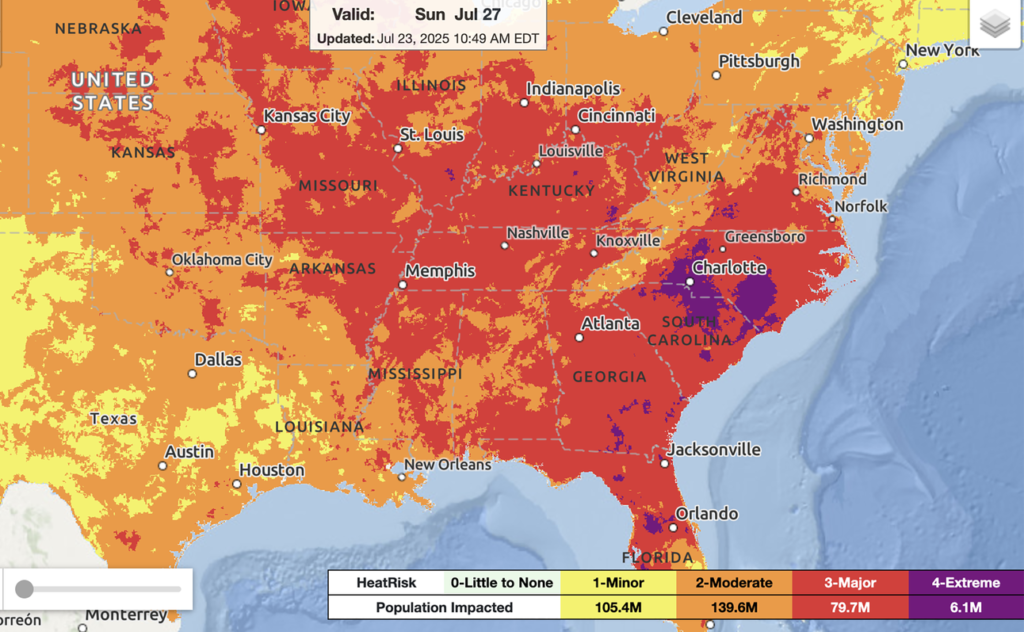In late July 2025, a massive heat dome brought extreme heat and humidity to the central and eastern United States, affecting millions and breaking numerous temperature records.
The heat dome, a high-pressure system trapping hot, humid air, impacted over 160 million people across more than 25 states, from Florida to New England and west to the Midwest and Mississippi Valley. It began intensifying around 23 July and persisted through to 31 July with the Southeast experiencing prolonged extreme conditions.
High humidity exacerbated the heat, pushing heat indices (feels like temperature) above 100°F (38°C) in many areas, with some regions reaching near 120°F (49°C). Overnight temperatures remained high, often in the mid-to-upper 70s or low 80s, offering little relief and increasing health risks.

National Weather Service/NOAA
Rapid analysis of the heatwave by Climate Central found that climate change made the extreme heat at least three times more likely for almost half the U.S. population, compared to a world without fossil fuel emissions. In specific areas, such as Salt Lake City, Santa Fe, Tallahassee, and Montgomery, the excessive heat was at least five times more likely, indicating an exceptional climate-influenced event with a Climate Shift Index (CSI) level of 5.
Dr. Kristina Dahl, VP of Science at Climate Central, commented “This is not your grandmother’s heat wave. Yes, July is usually a hot month, but climate change is making this heat wave significantly hotter — and therefore more dangerous — than heat waves of the past.”

The climate scientists at World World Weather Attribution are very clear in their view. “Every heatwave in the world is now made stronger and more likely to happen because of human-caused climate change.”